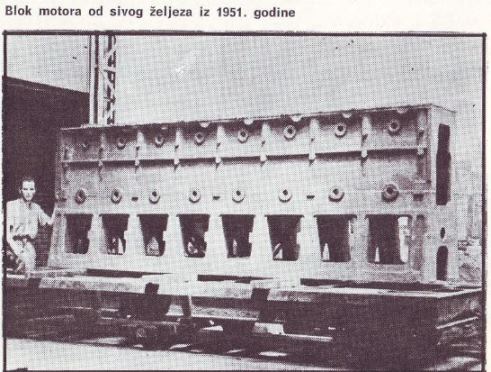The time since the World War II was the time when Vulkan has started to rise, having 397 employees in 1950 with a tendency of steady increase.
Since shipbuilding industry was crucial for construction and recovery of the country since the World War II, Vulkan gained a significant position within the shipbuilding industry.
Auxiliary ship machines were also produced, and the model workshop tracked the production of the foundry. However, the foundry partially separated itself to create its own product and at the beginning of the 50s it independently made castings for diesel engines for factory Torpedo. In the period from 1950 to 1951, the high furnace crane for Sisak Ironwork was built, which was mounted on the spot. Until 1953 the foundry made castings of gray cast iron and bronze, and since 1953 it has gradually shifted to steel cast iron. This was a key moment for the future of the foundry in becoming the famous manufacturer of carbon castings as well as alloyed and high-alloyed steel castings.
From 1948 to 1951, the distribution of machines was carried out from Germany on account of war damages. Machines were exploited to the maximum during the war and were greatly damaged so it took a lot of effort from then-masters to enable them to work.
Also, in 1952, as part of technical control of Vulkan a laboratory was established which had laboratory for rapid analysis of each batch of steel casting and mechanical laboratory.
Since 1953, besides the naval program, the industrial program had begun: electric cranes on ropes and chains, crane accessories, bridge cranes, driving winches, winches for construction were made.
Sources:
- Latkovic, B. (1985). Vulkan-Rijeka – kronika najvaznijih zbivanja 1929. do 1985.. Rijeka: Radna organizacija Vulkan.
- Website of VULKAN-NOVA (http://www.vulkan-nova.hr/en/o-nama/)



